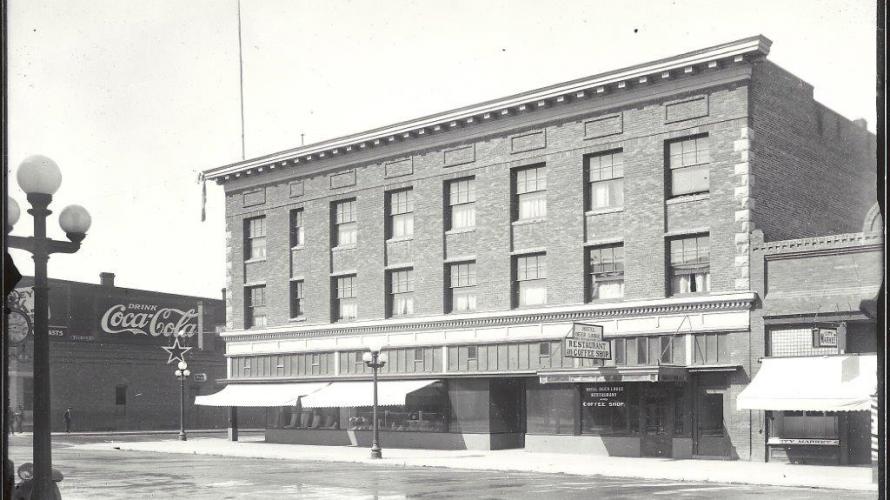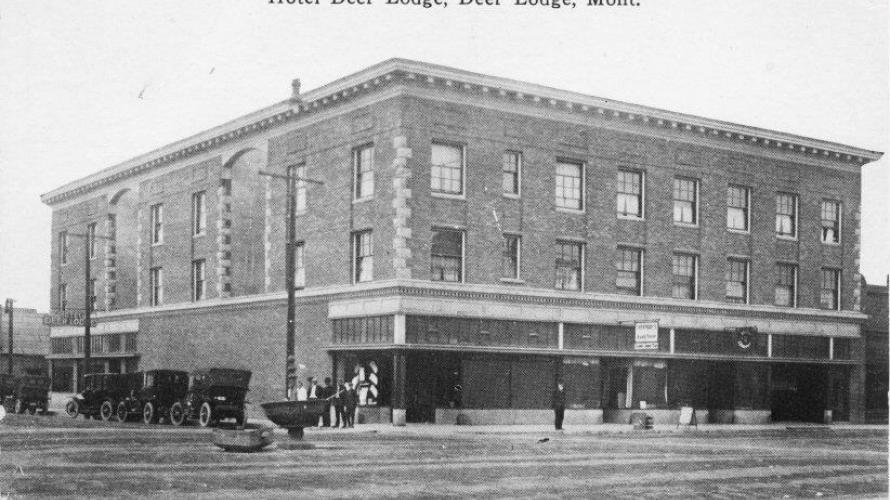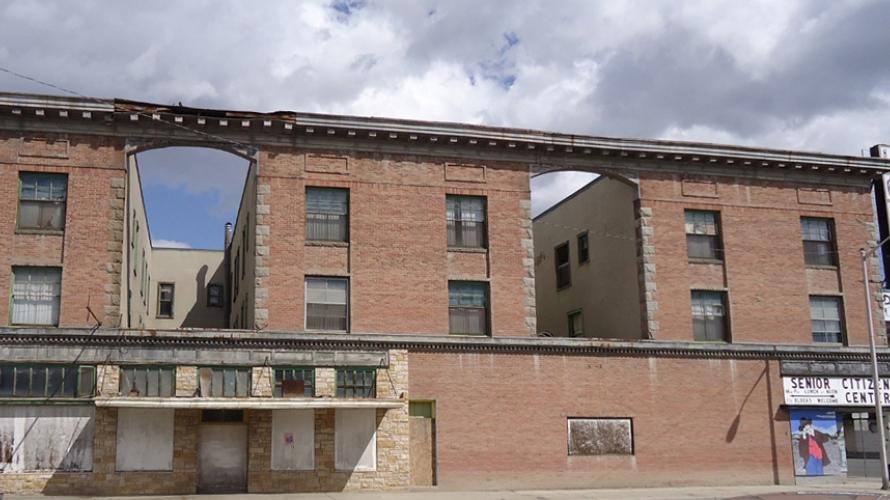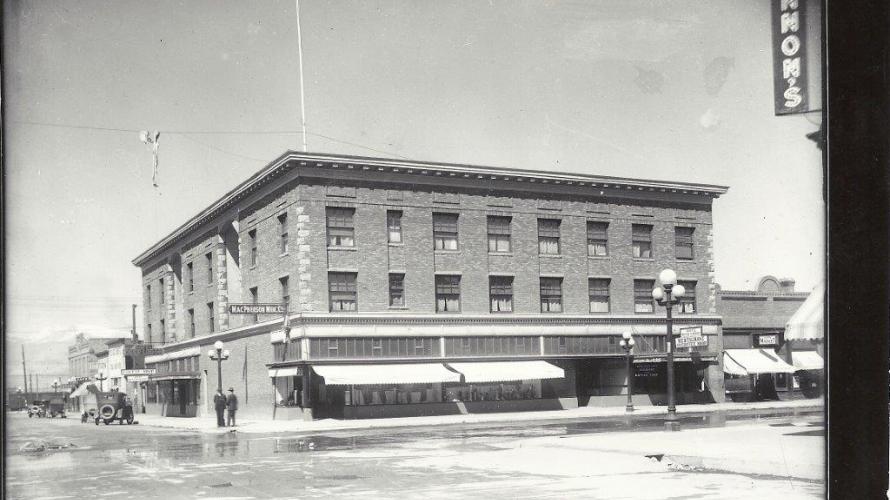




Brian D'Ambrosio is a writer/editor living in Missoula, Montana. D'Ambrosio is the author of more than 300 articles and five books related to Montana history, people, and travel.
*****************
They say that he who loves an old house never loves in vain. Then, perhaps, he who rescues an endangered historic structure loves even more fully. At the very least, lovers of architectural relics see no fault in what it is that they are attracted to.
When Deer Lodge resident Kayo Fraser eyes up the exterior of the Deer Lodge Hotel, built in 1911, she wonders what there is not to love. Mostly, she surmises, that local people are so familiar with the neglected three-story brick structure, that they have stopped noticing its grandeur.
“I think a lot of times people don’t even look at this any longer because it’s been ugly for so long,” says Fraser. “I think they forget just what an amazing, beautiful building this still is.”
Fraser understands that a city without distinct old buildings – Deer Lodge, in fact, has many – is like a man without a memory. Recollections of the Deer Lodge Hotel trace back to a man called Leopold Schmidt, who managed breweries in Deer Lodge and Butte, and later founded the Olympia Brewing Company, in Washington. In 1911, he was in Deer Lodge to promote a new hotel and corporation; Schmidt was assisted by local bankers and businessmen S.E. Larabie, H. J. Bielenberg, Frank Conley, C.H. Williams and Peter Pauly.
St. Louis-based architect H. F. Beinke was chosen to design the new “E”- shaped edifice, which he drew up with 52 guest rooms and 14 offices. The hotel, which is predominately self-lit thanks to the astute placement of its skylights, opened March 20, 1912. Mayor Frank Conley and his wife were its first guests.
In newspapers and conversations, it was often referred to as “one of the finest hotels in Montana;” lavishly modern amenities included the presence of an elevator and hot and cold water in all rooms. The vibrant landmark boomed with life decades ago.
Like many Montana places, booms came and went, and good times lingered long enough for a quick profit and wild growth spurt. Deer Lodge now copes with the same issues that once vibrant small towns grapple with: few jobs, fewer opportunities, plenty of vacant, neglected buildings. Understanding that the strength of a community originates from the integrity of its homes, Deer Lodge residents decided to reverse one building’s fate.
After learning that the owner of the Deer Lodge Hotel intended to sell it, Fraser and others formed the Deer Lodge Development Group (DLDG). With countrywide donations, the DLDG bought the hotel for approximately $42,000, on April 18, 2013. This isn’t the first time a group has intervened on the hotel’s behalf. It was purchased in 2000 by a group of entrepreneurs who specialized in fixing and flipping historic properties. When the economy tanked, however, so did any prospects of rejuvenation for the Deer Lodge Hotel.
“Several people have looked into buying it in the past,” says Fraser, “but this project was too big for most individual developers. The cost to restore the hotel to a workable, habitable structure could not be recovered by any sort of business investment. The only way it can take on life again is through an act of love and historic preservation.”
Fraser sees the hotel as a metaphor for Deer Lodge: as goes the building, so goes the town’s fate. She lovingly recounts the first time she entered the inside of the boarded-up beauty.
“I moved to Deer Lodge in 1990, and it was closed then. For years, people have always talked about how rotten the building was,” says Fraser. “How there was nothing left to it. I saw pictures of the grunge and the rotten mattresses and mold, the floors and the ceiling falling down. I went in with a Hazmat suite, rubber boots, and dust mask. I figured that you can’t bring it back if you’ve never been in there.”
Fraser immediately sensed a connection and purpose.
“I felt the beauty that was there, is there, and could be there again in the future.”
Purchasing the building may be the easy part, for it requires a sustained, expensive rehabilitation – at least 10 years’ worth of funding and labor.
“The bad news is that the roof needs replacement fast,” says Fraser. “It has been leaking for several years, and each year, the damage inside has gotten worse, with the rain and snow melt. Pigeons have used this for life, birth and death, with access through some of the broken windows.”
On the positive side, it is structurally sturdy and remarkably intact.
Fraser envisions the day when the hotel – anchoring the Historic District of Deer Lodge and unhealthily deteriorating since closing its doors in the late 1980s – becomes a lively destination center, replete with a high-quality restaurant, income-generating rentals, and flourishing retail spaces.
“This hotel has a spirit that wants to be in service again,” says Fraser.
It was Oscar Wilde who once said that “Any fool can make history, but it takes a genius to write it.” Perhaps any fool, too, can remove history. And any fool can push to do away with the structural links that connect us to the past. Even though it hardly takes a genius’s intuition to see the future in the valuable past, it does take a raconteur’s sense of respect. Indeed, above all, the story of Deer Lodge is strongly intertwined with the character and livelihood of one of its most precious assets.
“Too much has happened here that needs to be remembered,” says Fraser.



